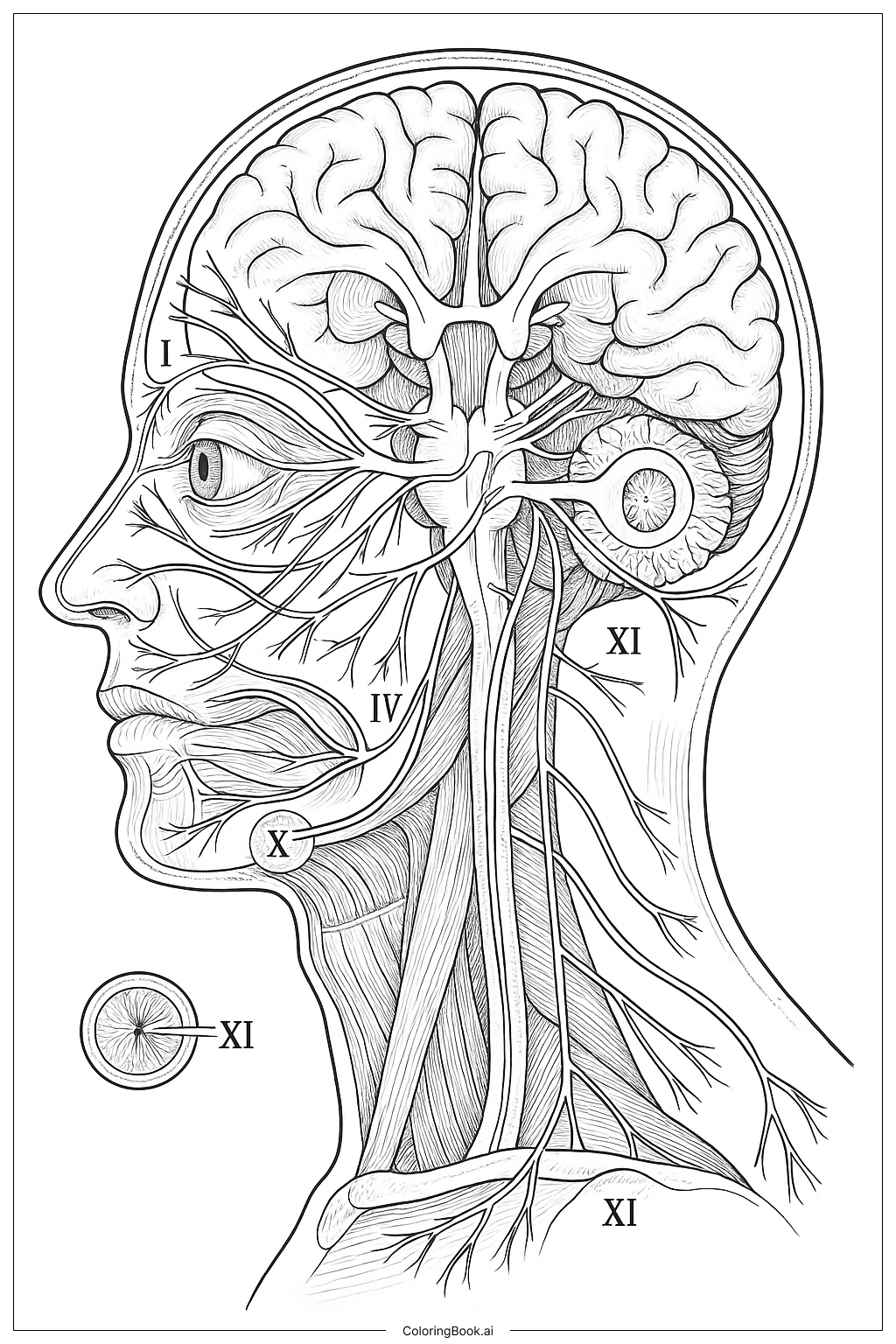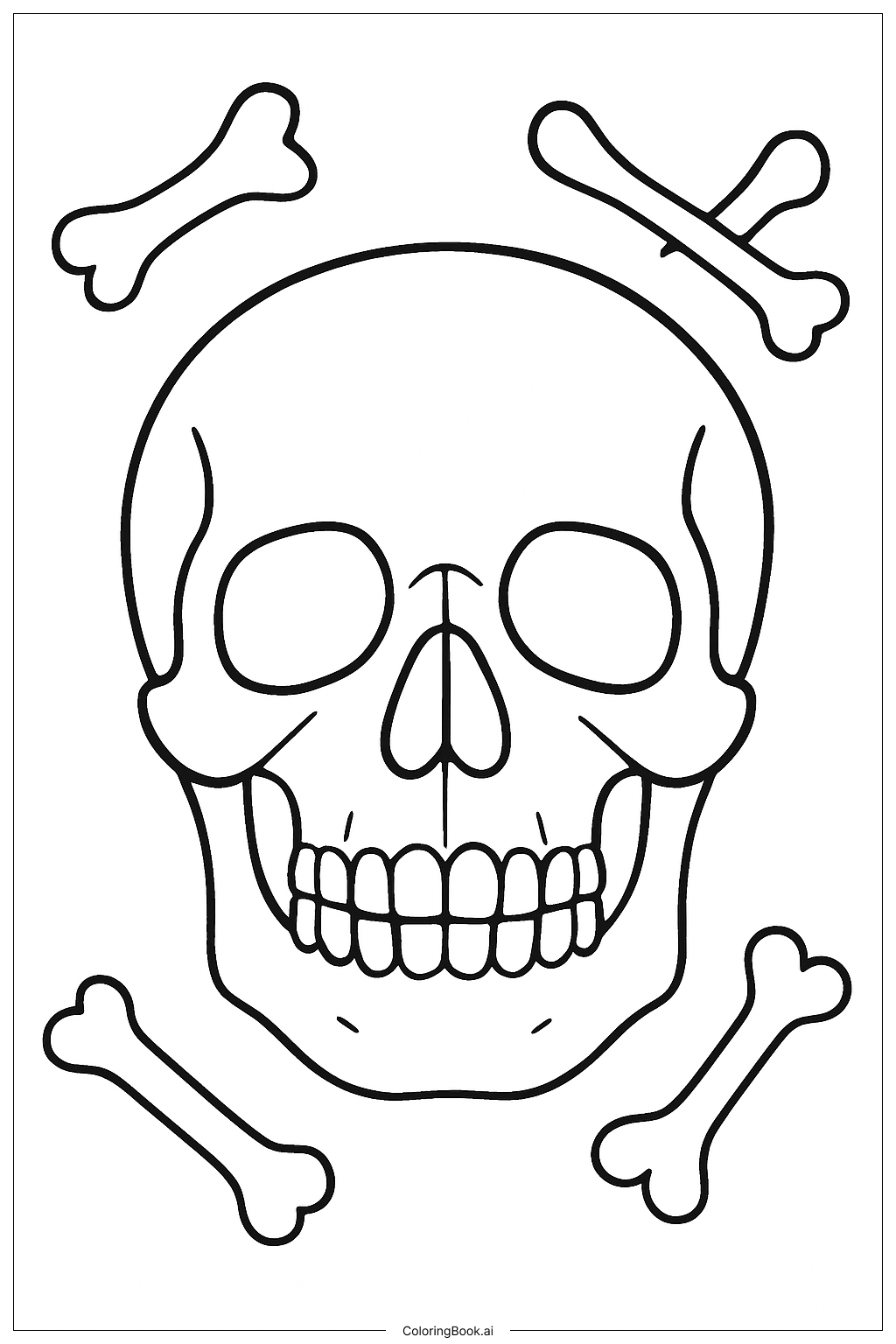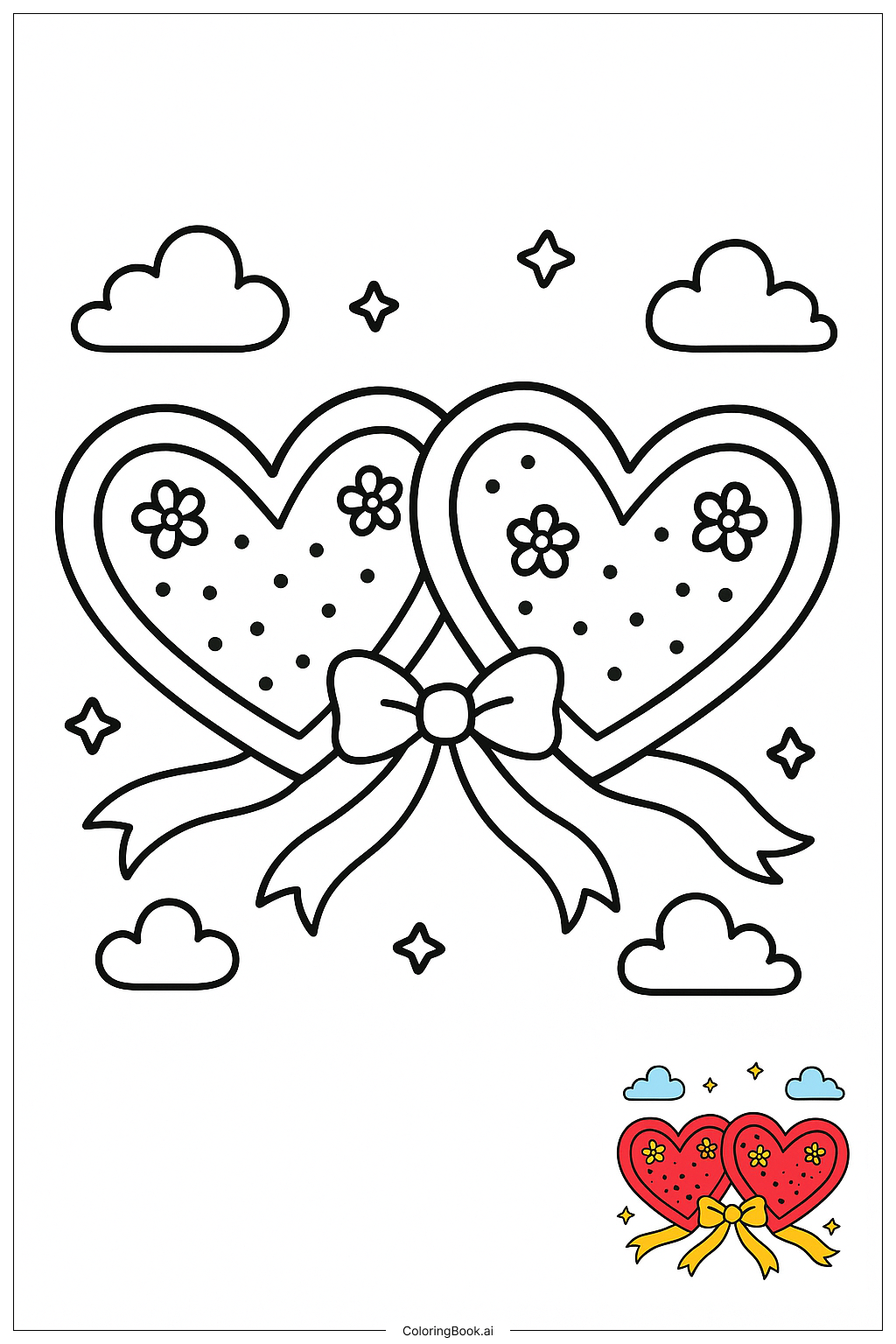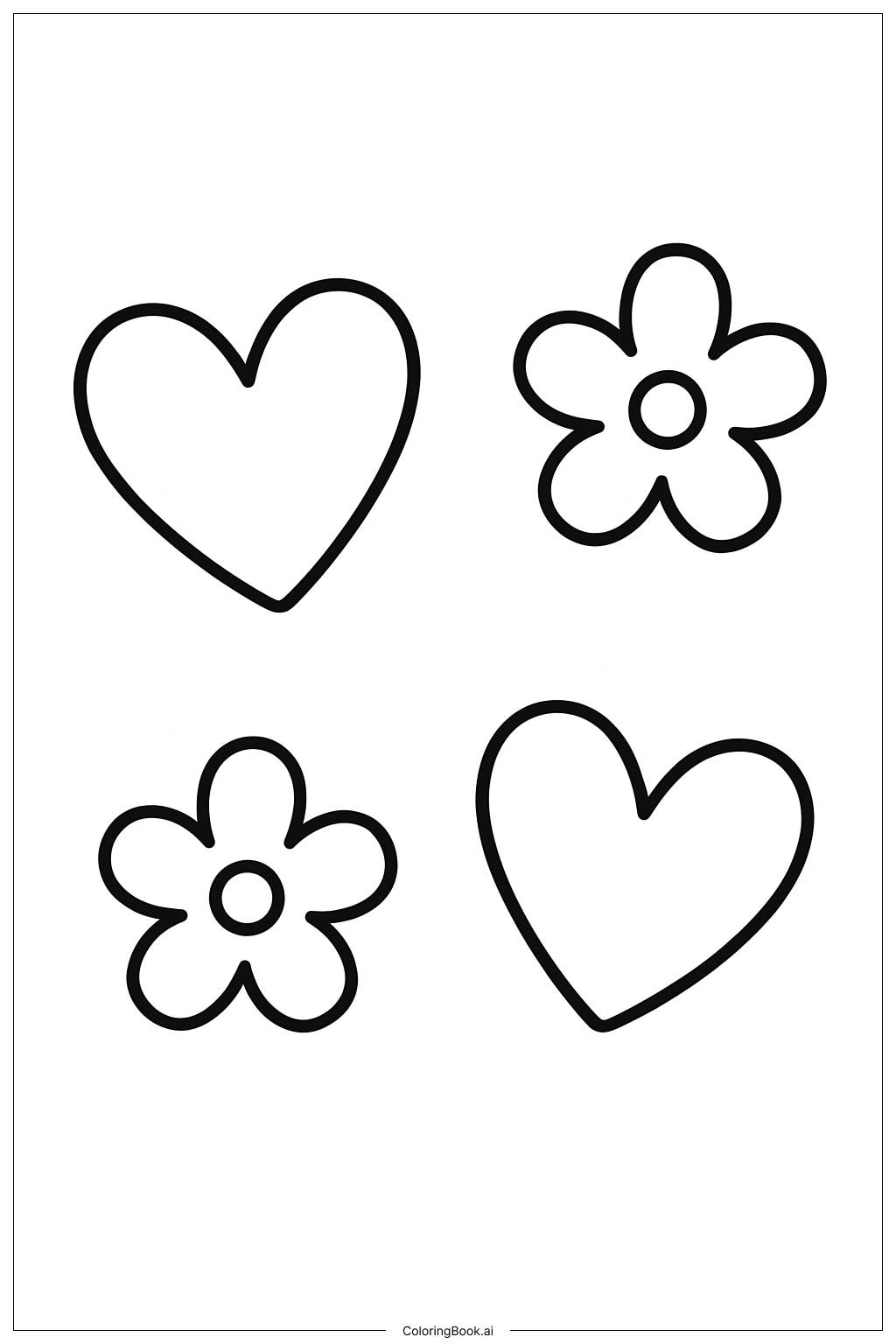Coloring tips: How to color Cranial Nerves Anatomy Diagram coloring page well?
Use different bright colors for each cranial nerve to make them stand out clearly. For example, color nerve I in red, nerve IV in blue, nerve X in green, and nerve XI in orange. Use lighter shades for the brain and darker shades for nerve paths to create contrast. You can also use small dots or patterns to fill areas like the muscles and nerves to make coloring more fun and engaging. Try to stay inside the lines to keep the picture neat.
Coloring challenges: Which parts are difficult to color and need attention for Cranial Nerves Anatomy Diagram coloring page?
1. The image has many thin and closely placed nerve lines, which might be tricky to color without going outside the lines. 2. Some nerves appear very small and detailed, requiring careful coloring and patience. 3. The brain’s texture includes many curved and complex lines that can be confusing to shade properly. 4. Keeping colors consistent for each nerve while avoiding mixing with nearby areas can be challenging. 5. Understanding where one nerve ends and another begins can be difficult due to the overlapping paths.
Benefits of coloring books: Advantages of drawing Cranial Nerves Anatomy Diagram coloring page
Coloring this cranial nerves picture helps children learn about human anatomy in a fun way. It improves focus and attention to detail as kids carefully color small nerve branches. It also encourages an understanding of the brain’s connection to the face and neck. Using colors to separate each nerve makes remembering their positions easier. Overall, it boosts creativity while teaching scientific knowledge about how the body works.







